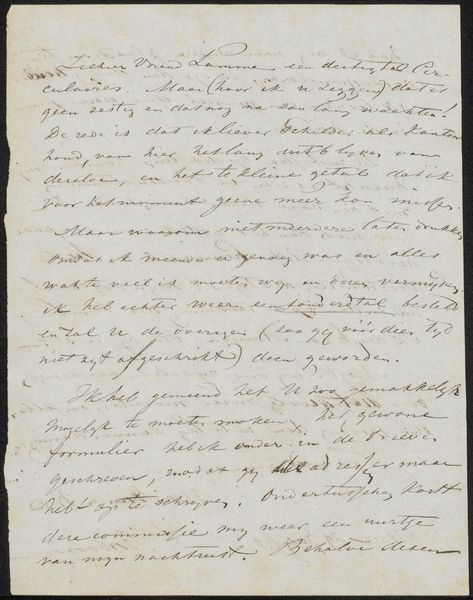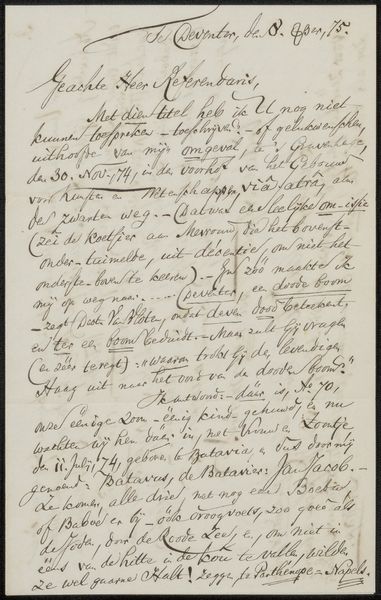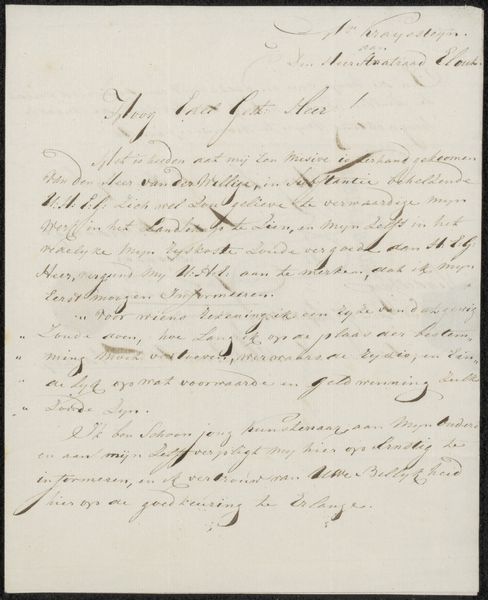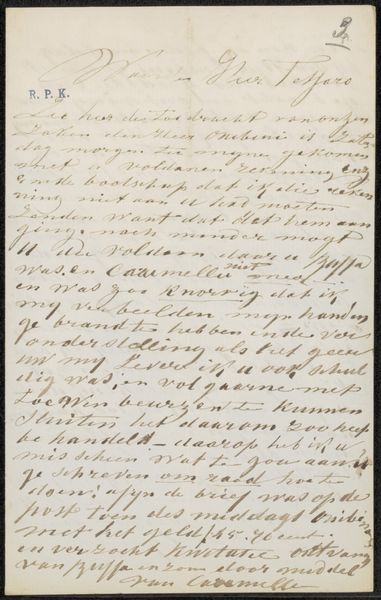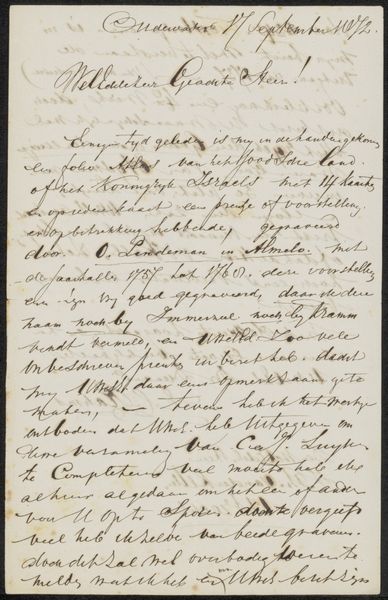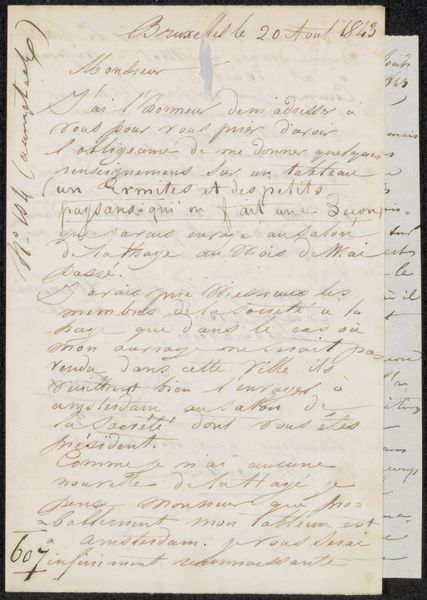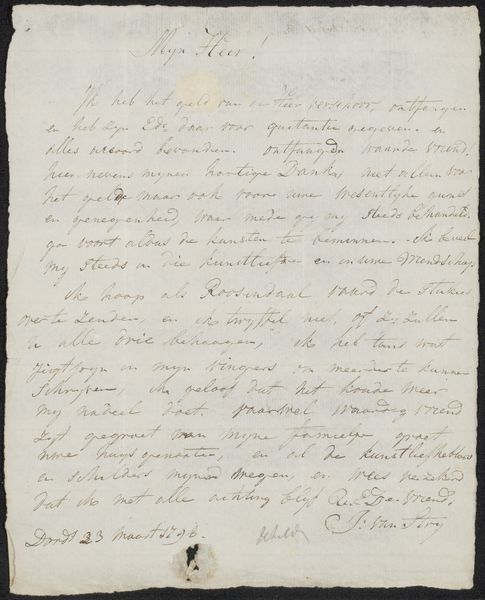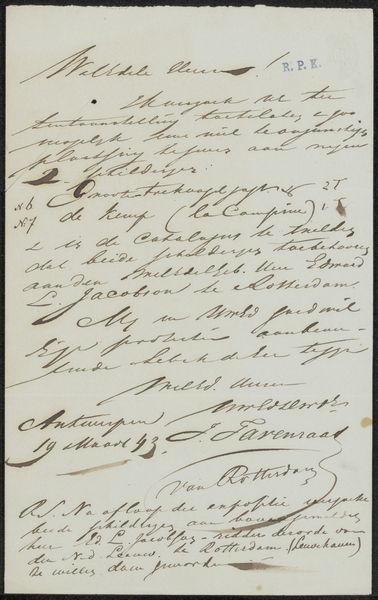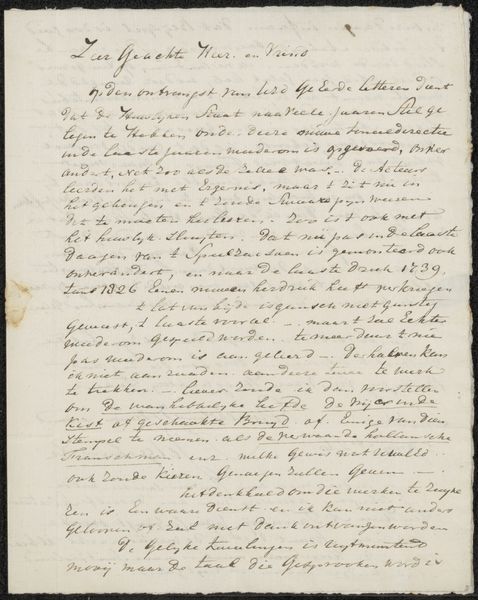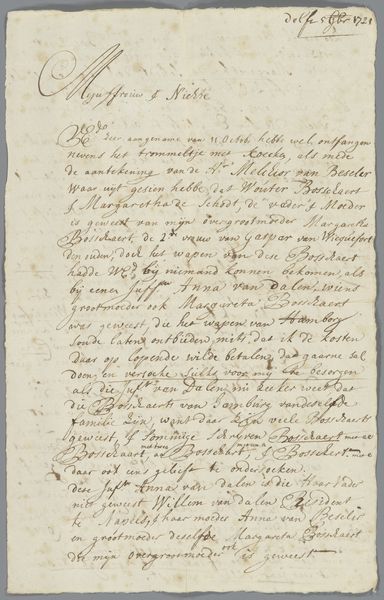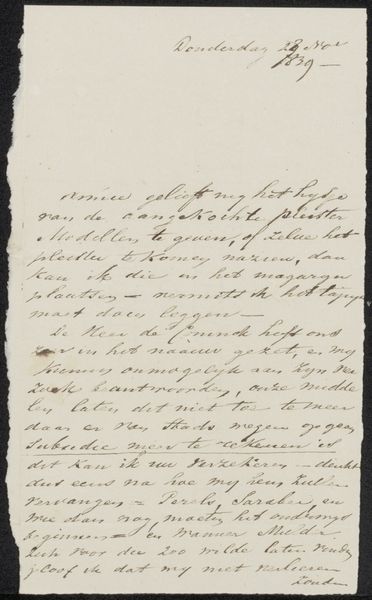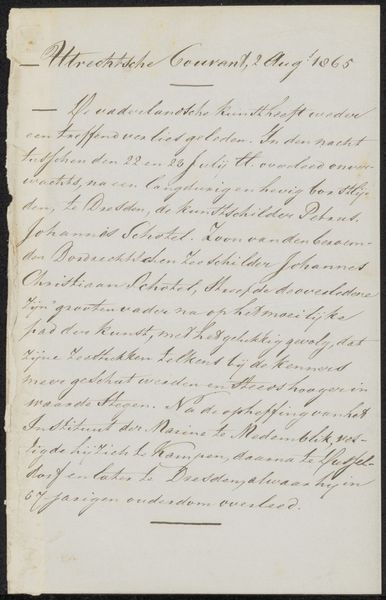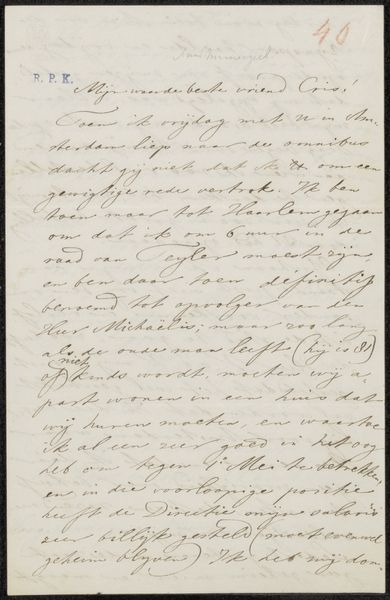
drawing, print, paper, ink
#
drawing
#
ink paper printed
# print
#
paper
#
ink
#
calligraphy
Copyright: Rijks Museum: Open Domain
Editor: This document, "Handschrift betreffende Joannes Petrus Antonius Verschuylen," dates from after 1810 and seems to be a print in ink on paper. The calligraphy is striking, but it’s difficult for me to decipher the handwriting! How do you interpret this work, considering its blend of script and imagery? Curator: It appears to be a meticulously crafted testament, a cultural memory preserved in ink. The act of handwriting itself becomes a symbol, carrying an emotional and psychological weight. It speaks to a time when penmanship was an art, a direct imprint of the individual. Consider the flourishes, the pressure applied to each stroke. Editor: I see what you mean about the pressure. What’s the significance of documenting Verschuylen's name in this manner? Curator: Names, especially those memorialized in handwritten documents, resonate with cultural significance. What emotions arise as you think about why this was printed? Is this document trying to communicate value or importance through artistic, handwritten quality? Or to preserve a personal connection? It is not mass produced, like regular printing. Editor: Perhaps it elevates him… Makes his memory more sacred? I hadn't considered it that way. It feels more personal now. Curator: Exactly! Think of the continuity – how we use images and script to remember, to understand our history. This handwriting shows what mattered to past people, and now also to us. This physical script keeps Verschuylen's presence alive in our mind today. What can we infer about that by considering handwriting as a visual, symbolic tool? Editor: This is incredible. I appreciate understanding how it preserves a personal presence beyond just the text itself. Thanks!
Comments
No comments
Be the first to comment and join the conversation on the ultimate creative platform.
